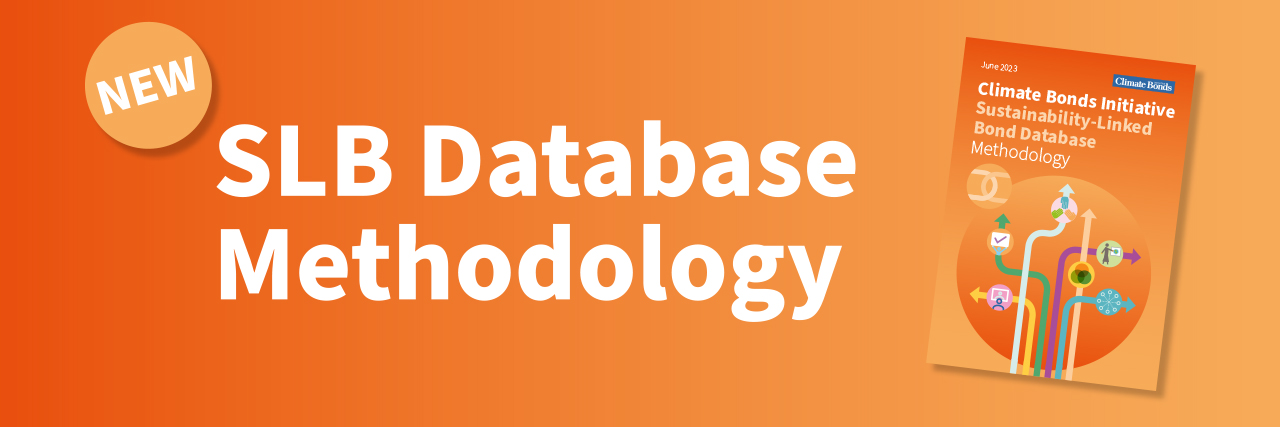
With USD256.6bn across 672 issuances, Sustainability-linked bonds (SLBs) have been in the news for better and for worse. Advocates argue their potential as forward-looking transition finance instruments, holding issuers accountable to their climate
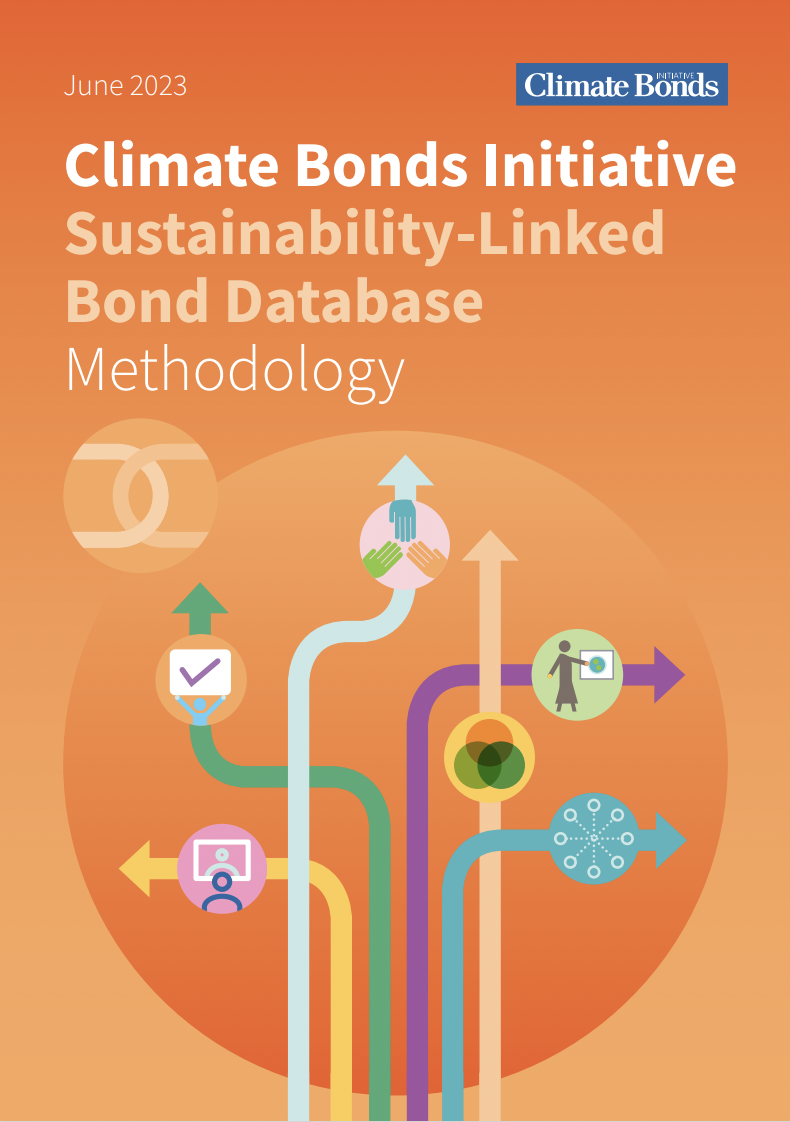 targets, as well as praising their flexibility for industrial or hard-to-abate sectors compared to other sustainability labels. Critics, however, have highlighted weaknesses seen in the market thus far: weak or immaterial targets, creative structuring of deals, and limited financial penalties/rewards.
targets, as well as praising their flexibility for industrial or hard-to-abate sectors compared to other sustainability labels. Critics, however, have highlighted weaknesses seen in the market thus far: weak or immaterial targets, creative structuring of deals, and limited financial penalties/rewards.
In response to both advocates and critics, as well as growing stakeholder demand, Climate Bonds has created its SLB database, not only tracking these issues and trends in the market, but highlighting the best-in-class.
This is governed not only by a holistic data structure, detailing bond issuance information, SLB targets, underlying transition plans, GHG assurance, amongst others. But also, this data is then assessed and governed by the SLBD methodology, sorting SLBs into four levels of credibility: Fully-aligned, Strongly-aligned, Aligning, and Not-aligned.
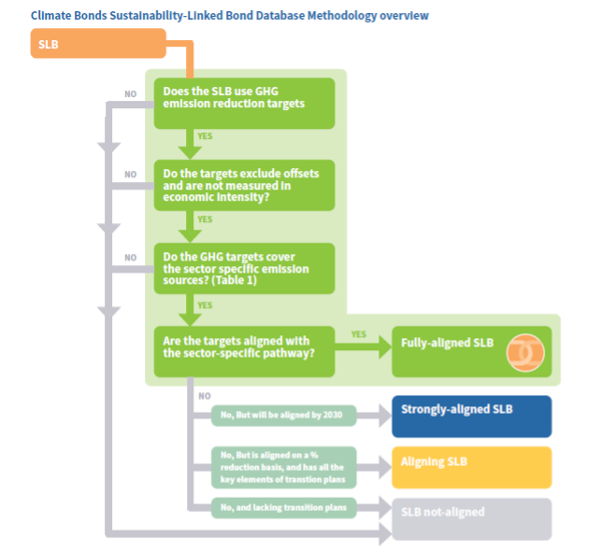
The full methodology can be found here, but in essence we are defining each level of alignment against a sector-specific, 1.5-degree pathway. Assessing each deal, we can then see where the overall market is, as well as the reasons for non-alignment:
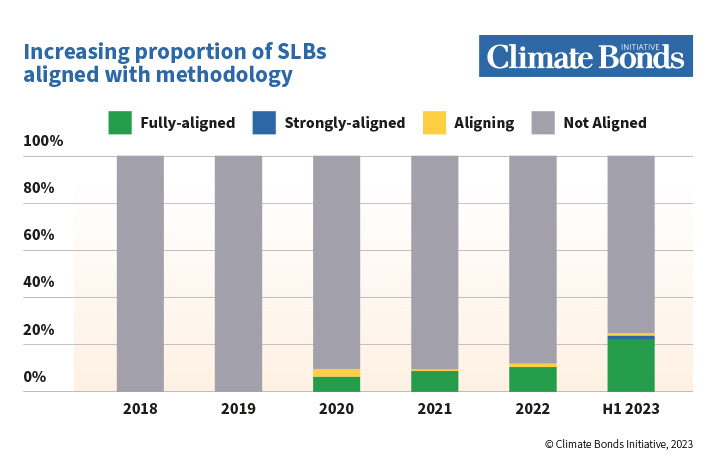
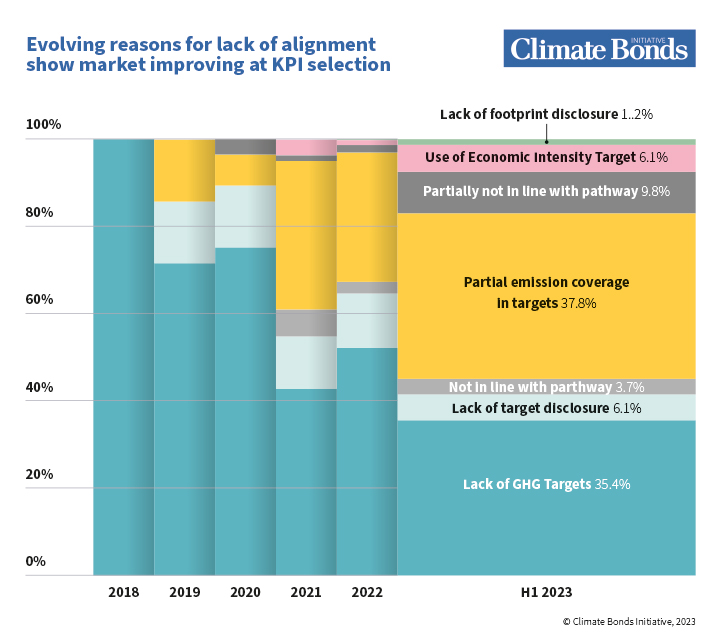
Firstly – it’s great to see that the proportion of aligned SLB issuance is increasing, reaching 25% in the first six months of 2023 already!
Secondly – we can see that the market is maturing in its selection of KPIs, more and more issuers are using GHG targets, while the main issue is now the lack of all material scopes being included in the targets (the sector-by-sector list can be found on page 7 of the methodology).
While SLBs are very much the younger siblings of Green bonds, and so have had less time to mature, the need for urgency is clear: not only do companies and governments need to develop transition plans and issue transition financing, but they most fundamentally need to decarbonise rapidly to align with 1.5°C pathways.
Based off this, we have a call for action for all stakeholders in the SLB market:
Let’s get half of all SLB issuances in 2023 in alignment!
We stand ready to support any and all SLB issuers, their underwriters, their investors, and SPO providers to achieve this target.
